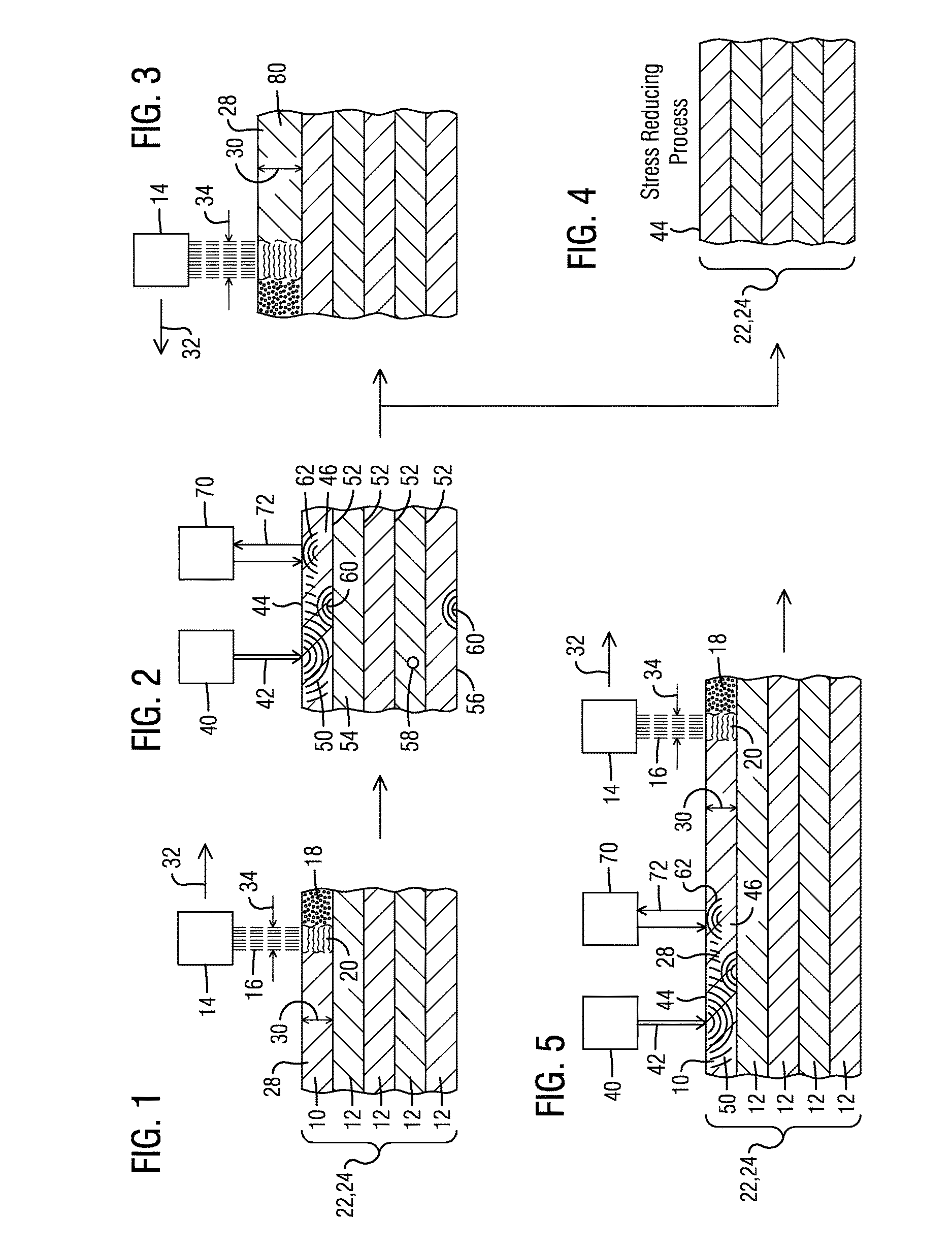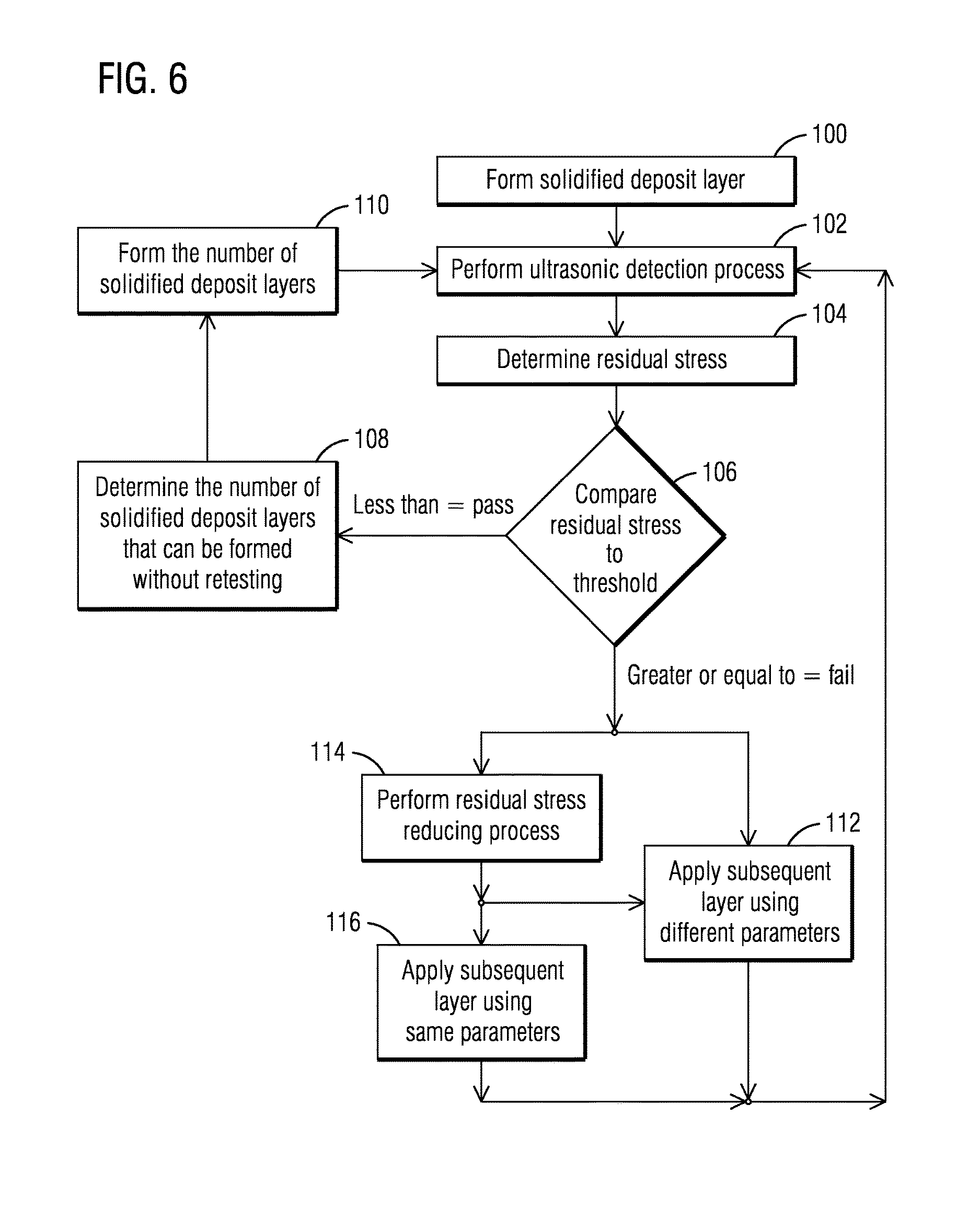Adaptive additive manufacturing process using in-situ laser ultrasonic testing
an additive manufacturing and in-situ technology, applied in the field of in-situ laser ultrasonic testing, can solve the problems of non-destructive x-ray and neutron diffraction techniques, inability to carry out in-situ, and material removal,
- Summary
- Abstract
- Description
- Claims
- Application Information
AI Technical Summary
Benefits of technology
Problems solved by technology
Method used
Image
Examples
Embodiment Construction
[0011]As with many manufacturing process, selective laser heating processes (e.g. SLM, SLS) result in physical characteristics, such as a defect and / or a buildup of residual stress. The level of residual stress can be high and can affect the structural integrity of the component. Consequently, it is beneficial to know the amount of residual stress present as well as any other defects. The inventors have recognized that residual stress may occur within each layer and may build up with the formation of additional layers, and that it will be beneficial to identify physical characteristics during the additive manufacturing process.
[0012]Prior techniques associated with residual stress control in, for example, building up of a blade tip, include alternating the application of the laser beam from side to side to even-out the residual stresses. These parts can then be heat treated to further alleviate the residual stresses. However, these processes do not necessarily measure the residual s...
PUM
| Property | Measurement | Unit |
|---|---|---|
| energy | aaaaa | aaaaa |
| physical characteristic | aaaaa | aaaaa |
| residual stress | aaaaa | aaaaa |
Abstract
Description
Claims
Application Information
 Login to View More
Login to View More - R&D
- Intellectual Property
- Life Sciences
- Materials
- Tech Scout
- Unparalleled Data Quality
- Higher Quality Content
- 60% Fewer Hallucinations
Browse by: Latest US Patents, China's latest patents, Technical Efficacy Thesaurus, Application Domain, Technology Topic, Popular Technical Reports.
© 2025 PatSnap. All rights reserved.Legal|Privacy policy|Modern Slavery Act Transparency Statement|Sitemap|About US| Contact US: help@patsnap.com



